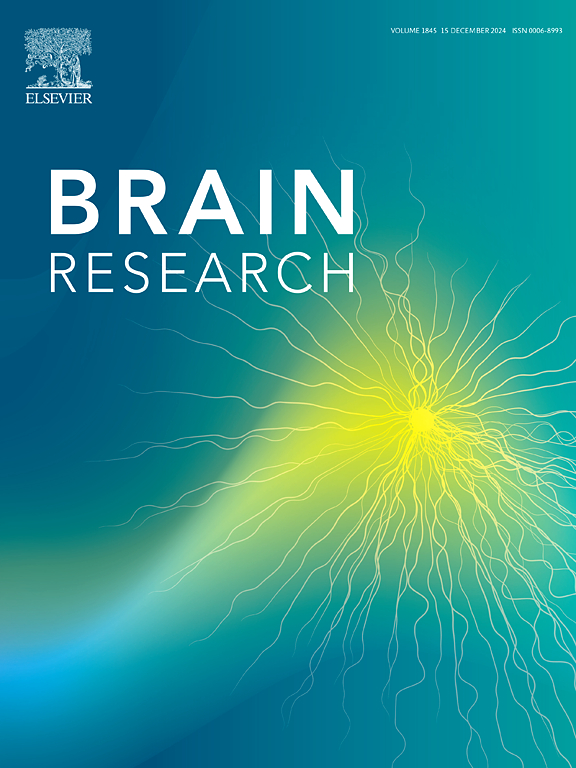亚洲酸通过改变星形胶质细胞和AKT1-PRKCB信号通路对脑癌的影响:基因组和网络药理学视角
IF 2.7
4区 医学
Q3 NEUROSCIENCES
引用次数: 0
摘要
胶质母细胞瘤(GBM)是最常见的原发性脑肿瘤,由于其生长速度快、扩散范围广,目前的预后不容乐观。最近的研究表明,从东方树(Trema orientalis L.)中提取的亚洲酸(AA)具有作为药剂的潜力。本研究采用了从东方树叶甲醇提取物中提取的 AA,并利用高分辨质谱(HRMS)分析法对其进行了检测。然后,为了预测 AA 在治疗 GBM 中的治疗优势,我们进行了一项硅学研究。我们使用了 SwissADME、pKCSM 和 Protox-II 等在线网络服务器来评估 AA。然后,确定了 AA(来自 Swiss Target Prediction 和 TargetNet)和 GBM(来自 GeneCards 和 DisGeNET)的主要靶点。然后,将这些重要基因合并到 STRING 和 ShinyGo 数据库中,检查蛋白-蛋白相互作用(PPI)网络、基因注释和 KEGG 通路,目的是找出参与 GBM 管理的核心机制。研究了已构建网络的前五大枢纽基因靶点(AKT1、SRC、IL-6、TNF 和 EGFR),以及一些同时存在的其他主要靶点(PRKCB、GSK3B、ITGB1、BRAF 和 PTPN6)。这些靶点与滑膜细胞增殖、细胞因子活性、表皮生长因子受体酪氨酸激酶抑制剂抗性等 GO 活动以及癌症相关通路中的蛋白聚糖密切相关。此外,还进行了生存期研究,以评估靶点的慢性化程度,以及重要靶点与 AA 针对 GBM 的分子对接活动,以确定结合效果。总体而言,研究发现 AKT1 是 AA 的最强受体,其结合能为 -8.19 kcal/mol,其次是 PRKCB(-7.53 kcal/mol)。最后,对接研究表明,AA 有可能成为治疗 GBM 的有效方法。此外,临床研究将为今后了解 AA 作为药物的疗效提供更准确的信息。本文章由计算机程序翻译,如有差异,请以英文原文为准。

Effects of Asiatic acid on brain cancer by altering astrocytes and the AKT1-PRKCB signaling pathway: A genomic and network pharmacology perspective
The most common primary brain tumor, glioblastoma (GBM), currently has a dismal prognosis because of its fast growth and dissemination. Recent research indicates that Asiatic acid (AA), which is extracted from Trema orientalis L., has potential as a medicinal agent. AA, which was obtained from a methanolic extract of Trema orientalis L. and examined utilizing high-resolution mass spectroscopy (HRMS) analysis, was employed in this investigation. Then, in order to forecast the therapeutic advantages of AA in managing GBM, we conducted an in silico study. Online web servers like SwissADME, pKCSM, and Protox-II were used to assess AA. Then, the major targets of the AA (from Swiss Target Prediction and TargetNet) and GBM (from GeneCards and DisGeNET) were identified. The important genes were then merged into the STRING and ShinyGo databases to examine the protein–protein interaction (PPI) network, gene annotation, and KEGG pathways, with the goal of identifying the core mechanisms involved in GBM management. The top five hub gene targets of the built network (AKT1, SRC, IL-6, TNF, and EGFR) were investigated, along with some contemporaneous additional major targets (PRKCB, GSK3B, ITGB1, BRAF, and PTPN6). These targets were tightly linked to GO activities such as synoviocyte proliferation, cytokine activity, and EGFR tyrosine kinase inhibitor resistance, as well as proteoglycans in cancer-related pathways. Furthermore, a survival study was conducted to assess the chronicity of targets, as well as molecular docking activity between important targets and AA against GBM to determine binding effectiveness. Overall, the study found that AKT1 is the most powerful receptor for AA, having a binding energy of −8.19 kcal/mol, followed by PRKCB (−7.53 kcal/mol). Finally, docking studies suggest that AA has the potential to be an effective treatment for GBM. Furthermore, clinical studies will provide more precise insights into the AA’s efficacy as a medicine in the future.
求助全文
通过发布文献求助,成功后即可免费获取论文全文。
去求助
来源期刊

Brain Research
医学-神经科学
CiteScore
5.90
自引率
3.40%
发文量
268
审稿时长
47 days
期刊介绍:
An international multidisciplinary journal devoted to fundamental research in the brain sciences.
Brain Research publishes papers reporting interdisciplinary investigations of nervous system structure and function that are of general interest to the international community of neuroscientists. As is evident from the journals name, its scope is broad, ranging from cellular and molecular studies through systems neuroscience, cognition and disease. Invited reviews are also published; suggestions for and inquiries about potential reviews are welcomed.
With the appearance of the final issue of the 2011 subscription, Vol. 67/1-2 (24 June 2011), Brain Research Reviews has ceased publication as a distinct journal separate from Brain Research. Review articles accepted for Brain Research are now published in that journal.
 求助内容:
求助内容: 应助结果提醒方式:
应助结果提醒方式:


